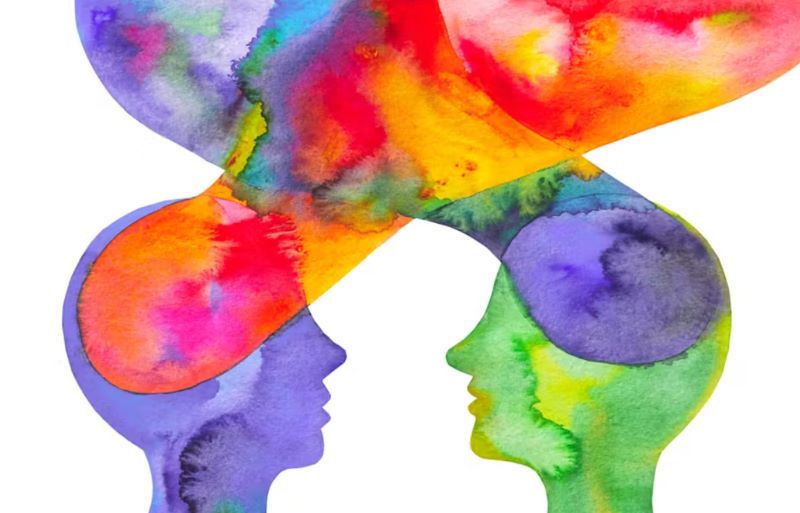
Composer Max Richter – with his epic, eight-hour-long piece Sleep – aims to be an auditory sandman.

By Joseph F. Chandler
Assistant Professor of Psychology
Birmingham-Southern College
Introduction
By now, you’ve surely heard that Americans aren’t getting enough sleep.
In our always-on society, a solid chunk of nightly rest seems, well, like a dream. We shave the edges of sleep to keep up, exchanging extra waking hours for compromised health, productivity and safety.
Despite this, we actually know how to sleep better; the list of empirically supported, low-cost, simple behavioral tweaks is extensive, whether it’s avoiding alcohol as bedtime approaches or just going to sleep at a regular hour. Though changing habitual behavior is easier said than done, one of these tweaks may be as simple as putting in your earphones and pressing play.
Recently, British composer Max Richter released an eight-hour-long composition titled Sleep, which he has described as a lullaby, meant to be listened to while sleeping.
The composition ranges from sweeping, airy selections called Dream to the heavy, trance-inducing Space sequence. Indeed, it is an ambitious, impressive piece of conceptual art. But could it actually improve your sleep?
Conflicting Results
Research on improving sleep with music is filled with methodological mistakes.
Self-reported sleep quality – the metric of choice for many music studies – often doesn’t correlate with objective measures of sleep: people will often think they’ve gotten a good night’s sleep (best defined as an unmedicated, uninterrupted night somewhere between seven and ten hours). But in many cases, they haven’t.
On the other hand, when objective measures are used (like the industry standard Polysomnography), true control groups (like a placebo group in a drug trial) are often left out.
With these drawbacks in mind, it’s easy to understand why the literature reads as equivocal. Some studies claim music can have a positive effect on sleep quality, while others cite no objective benefit.
A recent, methodologically sound meta-analysis reported an overall positive effect of music for improving sleep in those with a sleep disorder. This is promising, but even the article’s authors admit that more precise work is needed to reach a clear conclusion.
A Carefully Choreographed Cycle
Perhaps the answer is hidden in a more basic question. Given the way sleep is structured, can music even influence it to begin with?
The answer is yes and no.
Sleep is not a gentle slide into unconsciousness. Rather, it’s a complicated ride into an alternate conscious state, where reality is actively created from internal information, rather than external sensation.
That transition from “outside” to “inside” happens in four distinct steps. The sleep process manifests as a non-REM (NREM) phase (which is divided into three parts: NREM 1, 2 and 3) and Rapid Eye Movement (REM).
Imagine you’ve turned on Richter’s full Sleep composition and have just gotten into bed. As your eyes get heavy and your attention wanders, you are entering early NREM 1 sleep. You are deeply relaxed. This lasts for a few minutes.
At this point, the research suggests that Richter’s work may be having an effect; anything that contributes to your relaxation will help induce NREM 1 sleep. Richter’s Sleep certainly has relaxing qualities, like many of the classical pieces often used in music and sleep research.
As you continue to relax, your brain begins to exhibit what are called “organized theta waves,” which slowly switch attention channels from the outside environment to internal cues. At this point, you may feel as if you’re floating or lightly dreaming; if someone says your name insistently enough you may still respond. This lasts about 10 minutes, after which K-complexes and sleep spindles appear in your brain wave pattern.
This is where it gets tricky. K-complexes and sleep spindles – brief bursts of high activity on an otherwise slowing brain wave pattern – actively shield external stimuli. That is, during this stage your brain purposefully blocks the reception of and response to outside sensory information.
This hallmark of NREM 2 sleep means that, for all intents and purposes, you are no longer hearing Richter’s work. The auditory cortex is still receiving the sounds, but the thalamus – essentially the call center of the brain – stops the signal before any memories or sense can be made of the music.
NREM 2 lasts for about 20 minutes. Then your brain waves become very slow and very organized. These are called delta waves, and they indicate NREM 3: a state of near-complete nonresponsiveness to the external world. After 30 minutes of NREM 3, you briefly travel back up into the lighter stages of sleep, at which point you may again hear the composition. In fact, if it’s loud enough, unusual ambient noises at this point may actual wake you up, disturbing the carefully choreographed cycle.

If you remain asleep, however, you quickly slip into the REM portion of the cycle: your body becomes paralyzed, and your external senses get rewired to pay exclusive attention to your memories. You are essentially awake, but feeding off an internally derived reality to create the crazy dreams associated with REM. At this point I could walk into your room, call your name loudly and leave without you even knowing I was there. In other words, the external world – including what is being piped through your headphones – doesn’t matter for those amazing few minutes of REM sleep.
As the night goes on, the cycle will repeat itself many times, and each time the proportion of REM will become greater. By the end of the night, you are spending most of your time in your own internally created universe, for which the current external world has no bearing. For a grand total of 60 minutes of the eight-hour period, you will be able to hear Mr Richter’s beautiful work. The rest of the time, only your memories matter.
So for all its merits, can Max Richter’s Sleep help you sleep? The answer is probably yes: it could make falling asleep easier. But you’ll be missing most of the show.
Originally published by The Conversation, 11.13.2015, under the terms of a Creative Commons Attribution/No derivatives license.





